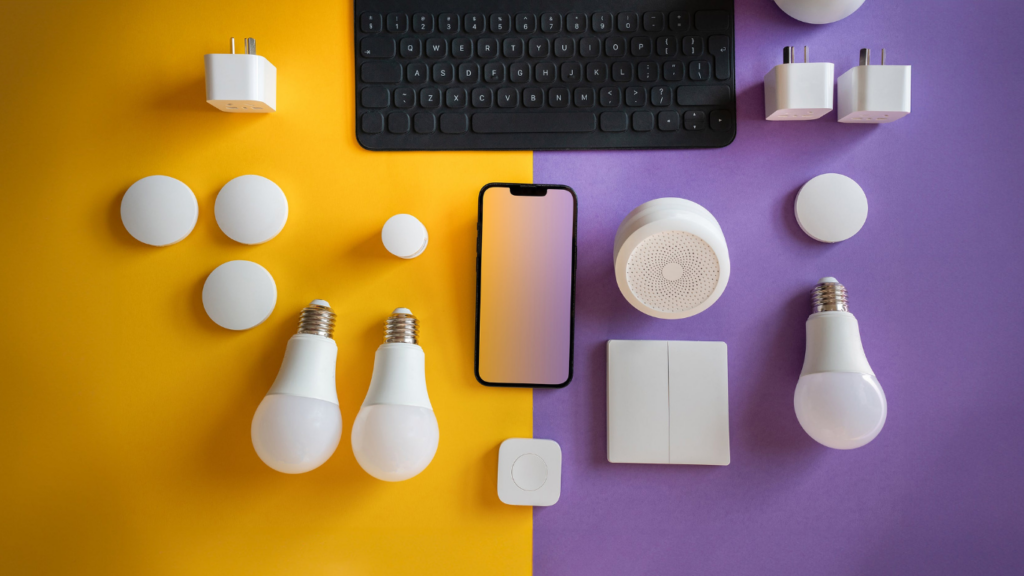Understanding Smart Home Entertainment
Smart home entertainment integrates advanced technology into traditional media setups to create an interactive, user-friendly environment. In my experience, these systems dramatically change how we consume media.
Key Components of Smart Home Entertainment
- Smart TVs
Smart TVs access various streaming services directly. Netflix, Hulu, and Disney+ are popular examples. These TVs often come with AI-driven recommendations, making content discovery easier and more personalized.
- Streaming Devices
Devices like Roku, Apple TV, and Amazon Fire Stick enable older TVs to stream modern content. These tools support multiple services, providing a unified platform for diverse entertainment needs.
- Voice Assistants
Voice assistants like Amazon Alexa, Google Assistant, and Apple’s Siri allow hands-free control. Users can adjust settings, play content, and even manage other smart devices through simple voice commands. I’ve found this feature incredibly convenient for multitasking.
- Smart Speakers and Sound Systems
Brands like Sonos, Bose, and JBL have revolutionized home audio. These systems offer crisp, high-quality sound and integrate seamlessly with voice assistants and streaming services. In my setup, the surround sound substantially enhances the immersive experience.
Benefits of Smart Home Entertainment
Convenience
Smart home entertainment systems centralize control, making operations smoother. Users easily switch between apps, adjust volume, or dim lights using their smartphones or voice commands.
- Personalization
AI algorithms tailor content to individual preferences, enhancing user satisfaction. I consistently receive recommendations based on my viewing habits, which adds a personal touch to my entertainment experience.
- Integration
Integration between devices ensures a seamless experience. Users can start watching a movie in the living room and continue it in the bedroom without interruption. This interconnected environment is a significant upgrade from traditional setups.
- Enhanced Audio and Visual Quality
Advanced systems support 4K, HDR, and Dolby Atmos, offering superior picture and sound quality. Experiencing these enhancements firsthand, I appreciate the clear, vibrant visuals and surround sound.
Investing in Smart Home Entertainment
- Future-Proofing
Upgrading to smart technology prepares households for future advancements. As manufacturers release new features, existing systems often receive updates, ensuring longevity and up-to-date functionality.
- Cost Considerations
Initial investments can vary widely. A basic setup might cost a few hundred dollars, whereas high-end systems can run into thousands. However, the long-term benefits often justify the investment. I noticed immediate improvements in convenience and enjoyment, making my setup cost-effective in the long run.
Smart home entertainment systems offer a significant upgrade over traditional media setups. They provide ease of use, customized content, and enhanced audio-visual experiences. These benefits make them an attractive option for anyone looking to upgrade their home entertainment.
Key Smart Tech Products

Integrating smart tech products enhances home entertainment systems. Let’s explore essential devices that can revolutionize the viewing experience.
Smart TVs
Smart TVs provide an all-in-one entertainment hub. They offer built-in internet connectivity, allowing access to streaming services like Netflix, Hulu, and Amazon Prime. Many models support 4K Ultra HD and HDR for superior picture quality. Motion and voice controls add convenience to navigation.
Streaming Devices
Streaming devices enable easy access to a plethora of online content. Devices like Roku, Amazon Fire Stick, and Apple TV connect to TVs via HDMI, providing diverse apps and games. These gadgets often include a remote with voice search capabilities and compatibility with major streaming platforms.
Smart Speakers
Smart speakers elevate audio quality while allowing control over other smart devices. Brands like Amazon Echo and Google Home support voice commands for music playback, news updates, and home automation. Advanced models offer superior sound clarity and integration with various services, including Spotify and Apple Music.
Home Theater Systems
Home theater systems deliver a cinematic experience at home. They combine high-definition video and immersive audio. Systems often consist of a smart receiver, surround sound speakers, and a subwoofer. Many systems support wireless connectivity, enabling easy integration with other smart devices for a seamless experience.
Integration and Connectivity
Smart home entertainment systems rely on seamless integration and connectivity to deliver an optimal user experience. These technologies work together to provide unified control and fluid interaction among various devices.
Voice Control Assistants
Voice control assistants like Amazon Alexa and Google Assistant simplify managing home entertainment systems. With these assistants, users can execute commands like “Play Netflix” or “Turn off the TV” without using remote controls. Smart speakers with integrated voice assistants allow for multitasking, such as adjusting the volume while cooking or dimming the lights for movie night.
Universal Remotes
Universal remotes consolidate control of multiple devices into a single interface. Devices like the Logitech Harmony Hub enable users to manage their TV, streaming devices, and sound systems efficiently. This comes in handy when switching between activities like watching TV, playing video games, or streaming music. Using a universal remote reduces clutter and simplifies the process of operating different components in a home entertainment setup.
Benefits of Smart Home Entertainment
Smart home entertainment systems offer numerous advantages that transform how you enjoy media and interact with technology.
Enhanced User Experience
Smart home entertainment systems deliver a customized and intuitive user experience. Voice control assistants like Amazon Alexa and Google Assistant simplify managing your devices. Commands like “Alexa, play my favorite movie” make media access effortless. Personalized recommendations from streaming services such as Netflix and Hulu enhance your viewing options, tailoring content to your preferences.
Cost Efficiency
Smart home entertainment investments can lead to long-term cost savings. Energy-efficient devices, like LED smart TVs, consume less power than traditional models. Subscription services, offering a wide range of content, eliminate the need for costly cable packages. Multi-functional devices, like a smart speaker that streams music and controls smart home devices, reduce the number of gadgets you need to buy.
Future-Proofing Your Home
Smart home entertainment systems keep your entertainment setup relevant. With regular software updates, your smart devices offer new features and improvements. Compatibility with emerging technologies, like 8K resolution and advanced audio formats, ensures your setup won’t become outdated quickly. Investing in smart tech today means your home remains at the cutting edge of entertainment.
Considerations Before Upgrading
Choosing to upgrade home entertainment with smart tech requires careful planning. Here are key considerations to ensure a smooth transition.
Budget Planning
Setting a budget is critical for any home entertainment upgrade. Costs vary widely with smart TVs, speakers, and streaming devices ranging from $50 to over $2,000. Knowing what you’re willing to spend helps prioritize necessities over luxuries. For instance, if you enjoy high-definition movies, investing more in a 4K TV rather than peripherals might make sense. Balancing between quality and price ensures you don’t overspend.
Compatibility
New devices should seamlessly integrate with existing systems. Verify that smart TVs, speakers, and other gadgets support your current platforms like Apple HomeKit, Amazon Alexa, or Google Home. Checking for compatible tech avoids future headaches. For example, a smart speaker should easily connect to your streaming service to avoid interruptions. Neglecting compatibility leads to unnecessary additional expenses for adapters or new peripherals.
Internet Requirement
A stable internet connection is essential for a smart entertainment setup. Streaming high-definition or 4K content requires speeds of at least 25 Mbps. For multiple users or devices, higher speeds might be necessary. Upgrading the internet plan or router ensures all devices function efficiently. For homeowners in areas with limited internet options, considering this constraint before investing in smart tech is essential.
Making informed choices in these key areas guarantees a functional and enjoyable upgrade to your home entertainment system.





